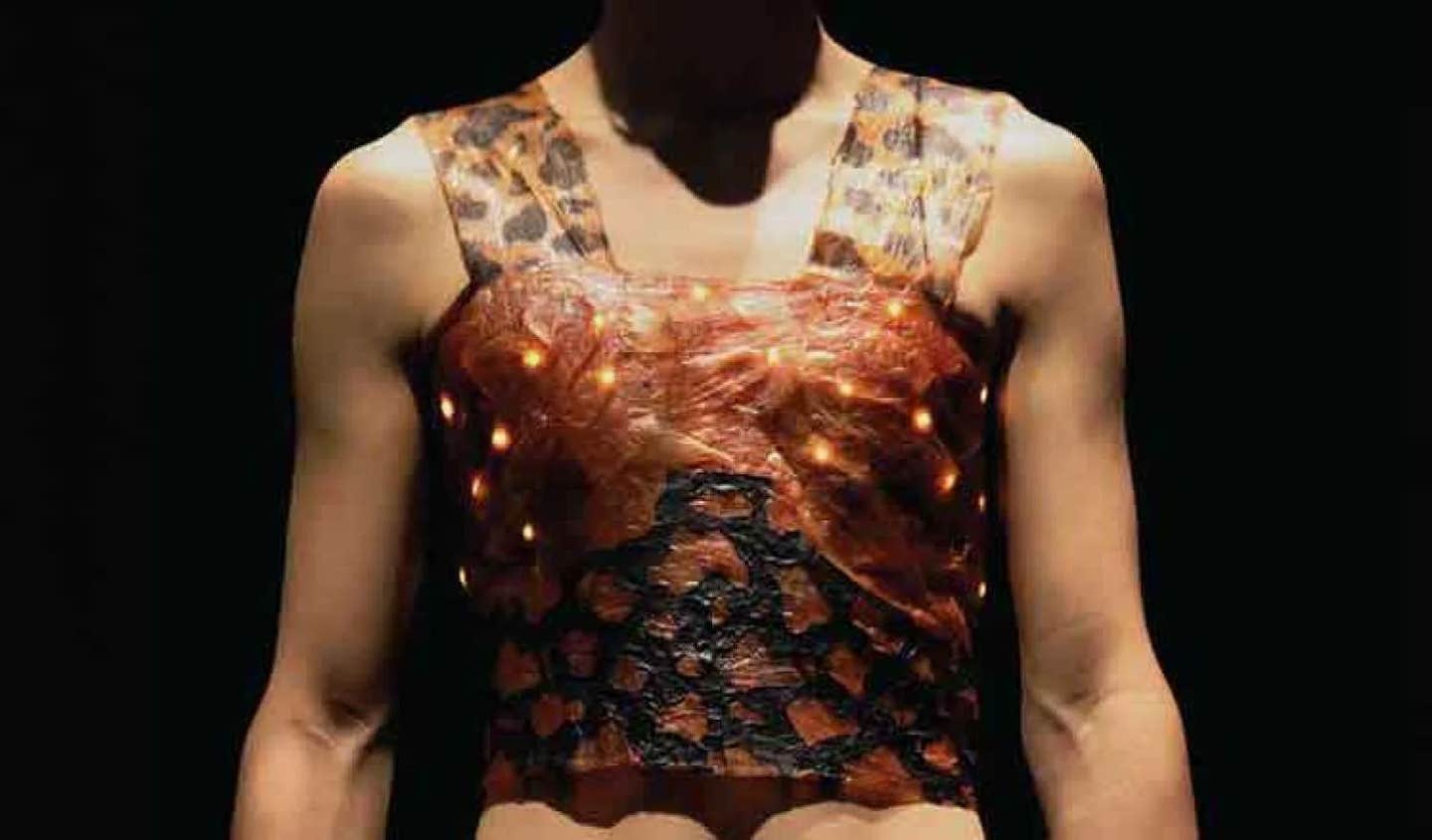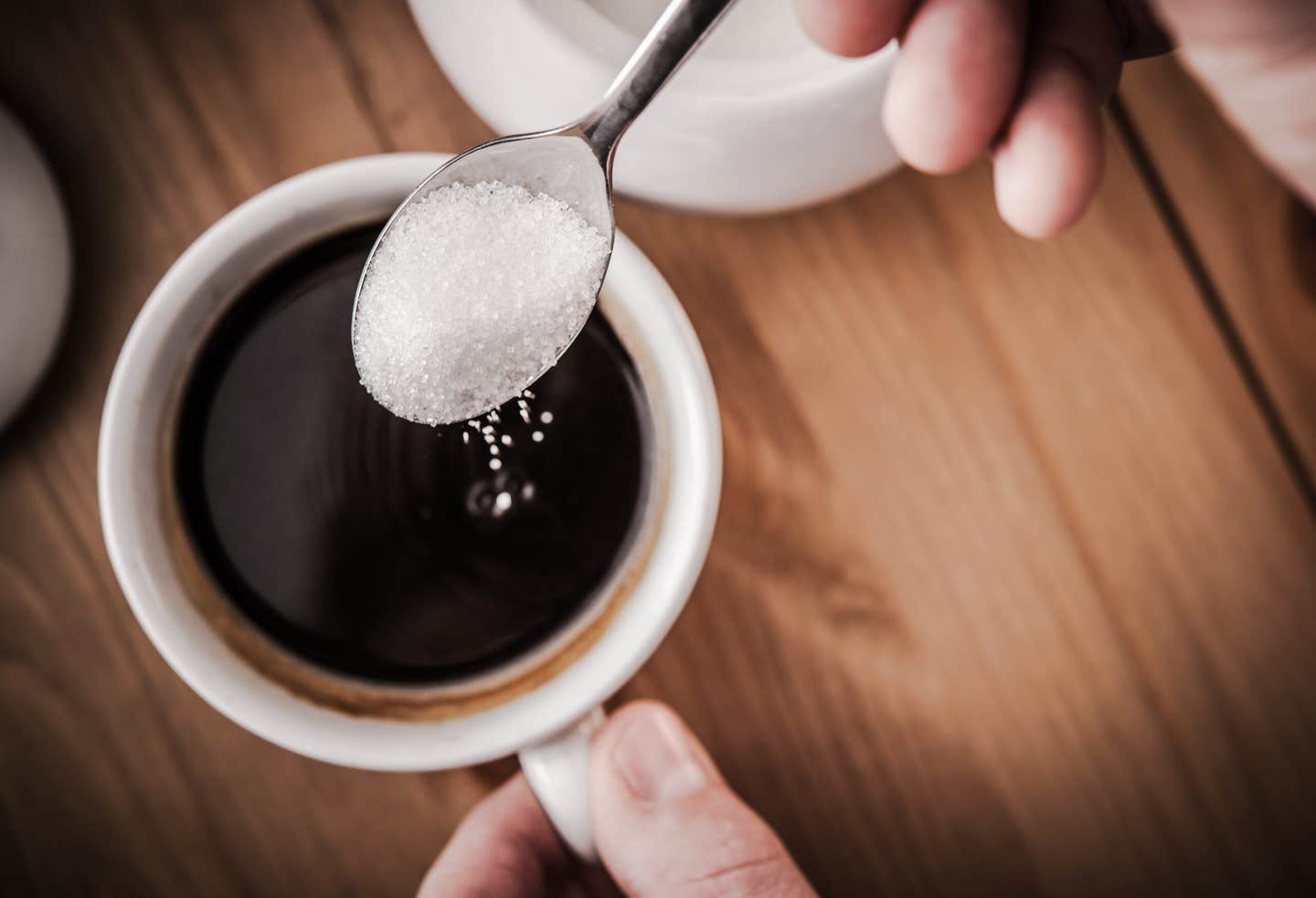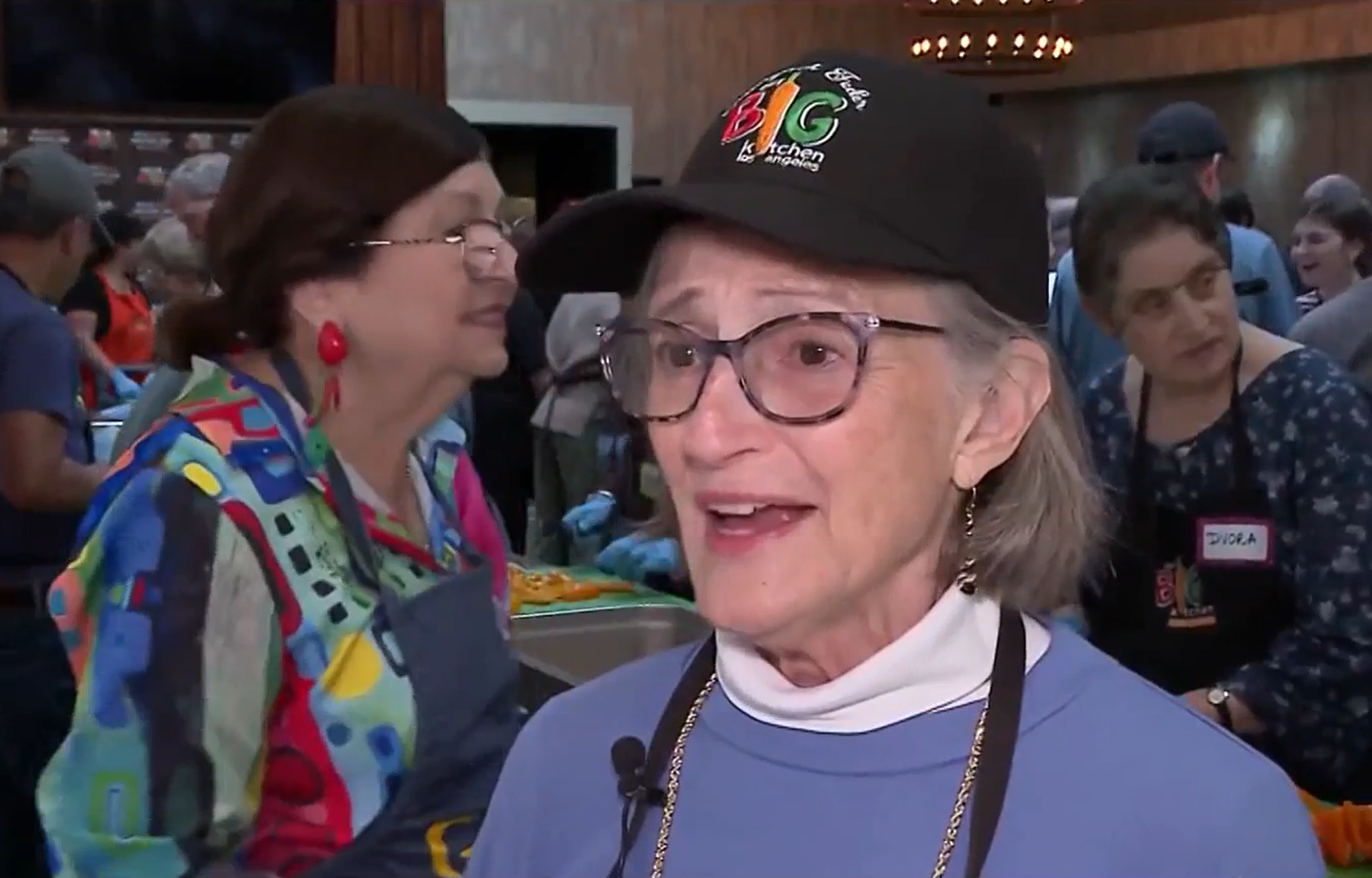Student uses microbes, and time, to grow her own clothes
Researcher is weaving the future of fashion with kombucha, the slightly-sour beverage brewed by fermenting tea with sugar.

[Dec. 21, 2023: JD Shavit, The Brighter Side of News]
LED lights twinkle on a kombucha leather "breastplate" shirt. (CREDIT: Hunter Allen-Bonney)
Italian fashion icon Giorgio Armani has his suits. German designer Karl Lagerfeld touted the "little black dress." Yet, in the world of fashion, innovation knows no bounds. Meet Fiona Bell, a researcher at the University of Colorado Boulder (CU Boulder) who is weaving the future of fashion with kombucha, the slightly-sour beverage brewed by fermenting tea with sugar.
Bell, armed with a doctorate in creative technology and design from CU Boulder, is a trailblazer in the field of biodesign—a domain that intersects biology, food science, materials engineering, and more. In her quest for sustainable fashion, she and her colleagues have turned to kombucha, not as a beverage but as a versatile material for haute couture.
Inside the Living Matter Lab at CU Boulder's ATLAS Institute, one can find mason jars and plastic storage containers filled with brown slurries. These concoctions emanate a distinct vinegar-like odor and are adorned with a thin, skin-like layer—a symbiotic culture of bacteria and yeast (SCOBY), often referred to as "the mother."
To transform SCOBY into a fashion statement, Bell and her team undergo an intricate process of harvesting and drying, resulting in what they term "kombucha leather." Crafting this material takes weeks, but the results are nothing short of remarkable. Their creation, a "breastplate" shirt, resembles the attire of ancient Roman gladiators, with a contemporary twist.
Related Stories:
"It's definitely different," admits Bell. "But I think there's an inherent beauty to this breastplate."
This innovative garment also incorporates embedded LED lights that illuminate upon a warm embrace. Bell and her team presented their groundbreaking experiments at the Seventeenth International Conference on Tangible, Embedded, and Embodied Interaction in Warsaw, Poland, in February.
Kombucha chic may not appeal to everyone, but Bell views it as an antidote to the scourge of "fast fashion"—the industry's penchant for quickly produced, disposable clothing. Her work, in contrast, epitomizes "slow fashion," where the pace of creation mirrors that of bacteria and yeast.
"It's slow fashion," she asserts. "It taught me to let go because it was a living thing. Sometimes, imperfections would form in the leather like bubbles or dark spots where clusters of yeast would gather. I had to accept that it was the organism bringing its own voice into the design."
From Engineer to Designer: The Journey of Fiona Bell
Fiona Bell's journey to becoming a fashion revolutionary was an unexpected one. Her background lies in mechanical engineering, with her prior foray into clothing limited to knitting scarves. Her interest in kombucha started during her undergraduate days at Santa Clara University in California, where she picked up the craft of brewing her own kombucha—an endeavor that was not always appreciated by her roommates due to its pungent odor.
Kombucha SCOBY seen before drying. (CREDIT: Hunter Allen-Bonney)
It was at CU Boulder, under the mentorship of Mirela Alistar, an assistant professor leading the Living Matter Lab, that Bell's perspective shifted dramatically. Alistar revealed the untapped potential of SCOBY, an aspect Bell had previously dismissed as a mere byproduct of the fermentation process.
"She said, 'you know, you can make stuff with the SCOBY,'" Bell recalls. "My mind was blown. Up until that point, I had thought it was just a waste product of the fermentation process."
Bell's endeavor isn't the first to explore the fashion potential of kombucha leather. Designer Suzanne Lee introduced a line of "BioCouture" bomber jackets utilizing similar materials. Moreover, Stella McCartney offers a Frayme Mylo shoulder bag crafted from mycelium, the root-like structures of fungi.
Kombucha leather, in essence, is a product of the natural fermentation process of kombucha. As the tea ferments, the microbes within produce SCOBY—a gelatinous layer rich in cellulose. By treating this slime with olive or coconut oil, it can be dried into a sheet that is less than a millimeter thick yet surprisingly durable, resembling animal leather in both look and feel.
Bell and her team invested over three months in meticulously constructing their kombucha leather breastplate, layer by layer.
Fiona Bell, left, and Mirela Alistar, right. (CREDIT: Hunter Allen-Bonney)
"I learned that I have to slow down to the pace of the organism," reflects Bell. "I have to wait for four weeks for a layer to grow, and once I have a layer, I need to know exactly how I'm going to use it."
Fashion Meets Technology: The Science Behind the Breastplate
The innovative breastplate designed by Bell's team combines an ancient aesthetic with modern technology. One layer of SCOBY was coated with activated charcoal, a biodegradable substance capable of registering and transmitting faint electrical signals, akin to a metal conductor. When touched against bare skin, this charcoal-infused layer activates embedded LED lights, creating a captivating visual effect.
"If you brush up against the breastplate briefly, the LEDs will give off a dim little spark," Bell explains. "But if you give someone a big, tight hug, they get really bright, and their glow lingers."
Unlike conventional fashion items, this shirt's material is biodegradable and decomposes in soil within approximately a month. Furthermore, the electronic components can be effortlessly removed and reused.
Fiona Bell envisions her project as a catalyst for transforming people's perception of clothing. By embracing slow fashion and sustainable materials, she hopes to inspire individuals to reimagine their relationship with what they wear.
"One of the coolest things about kombucha is its accessibility," Bell points out. "Anyone can brew their own kombucha. You can grow your own wallet in a month."
The Promise of Kombucha Couture
Fiona Bell's groundbreaking work in the realm of kombucha fashion signifies a significant step toward more sustainable and environmentally friendly clothing alternatives. Kombucha leather offers a versatile, biodegradable, and renewable option for couture, challenging the conventional fast fashion industry.
While kombucha chic may not yet be everyone's cup of tea, it represents a promising avenue for the future of fashion. Bell's journey from mechanical engineer to fashion innovator exemplifies the power of interdisciplinary thinking and the potential of symbiotic cultures of bacteria and yeast to reshape the world of haute couture.
As we continue to grapple with the environmental impact of the fashion industry, researchers like Fiona Bell remind us that sometimes, to truly innovate, we must slow down and let nature guide us in our pursuit of beauty and sustainability in fashion.
Note: Materials provided above by The Brighter Side of News. Content may be edited for style and length.
Like these kind of feel good stories? Get the Brighter Side of News' newsletter.



